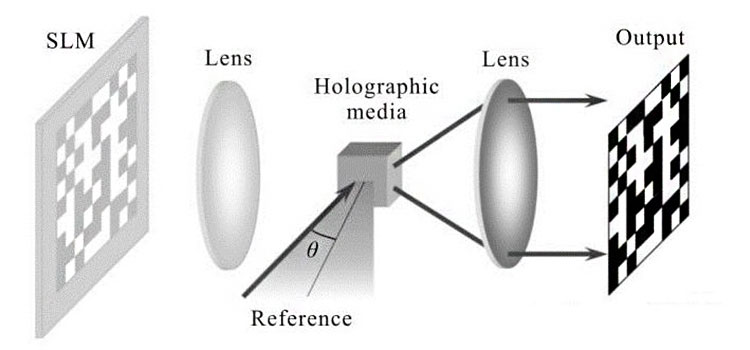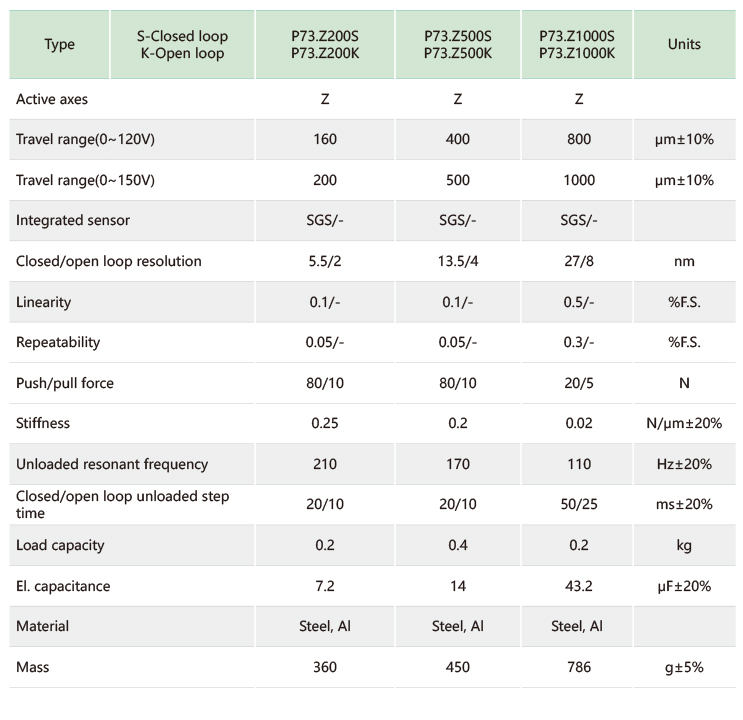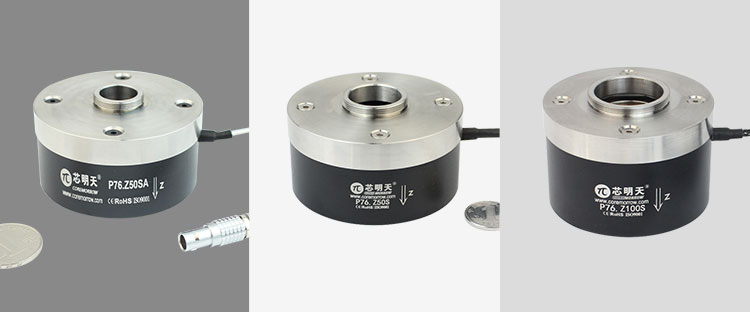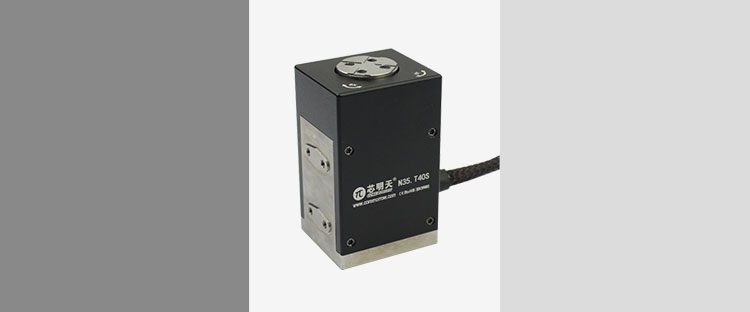
With the development of society and the progress of technology, people's demand for information keeps increasing. Due to the multi-media of information, people's data processing is no longer simple text, sound, image, but digital multimedia information integrated by high definition and high quality sound and motion image. The requirement of information data storage is higher and higher, especially the requirement of storage size and rate, which promotes the development of various storage technologies. Existing memory technologies, such as magnetic storage and semiconductor storage, are still improving to meet the demands of large capacity and high access rates, but these storage methods are gradually approaching their physical limits. Holographic storage will be a more ideal storage technology. Holographic optical storage technology is a kind of information storage technology with great development potential, which has attracted more and more attention because of its advantages such as high information redundancy, high storage capacity and high access rate.
Holographic Storage Technology
Holographic storage is an ultra-high density storage technology that uses light interference to record information in the form of holography on the recording material and recover the stored information in the form of diffraction under specific conditions.
The principle of holographic recording is the same as that of holography, but the specific method is different. One is that, the data is stored not on film but in a material that reflects light. A piece of medium like the size of a small sugar cube contains thousands of pages, each containing millions of bits of information. Second, the way of using object light is different.
During the write operation of holographic storage, the output of a laser beam is divided into two beams, one of which is expanded and then projected on the recording medium as a reference light. After the other laser beam is expanded, it is reflected by the surface of the recorded object, and as the object light, it is also projected onto the recording medium. The object light is used to carry the data, which is expanded to be able to fully illuminate the entire stereo light modulator (SLM). The SLM is similar to an LCD panel, which displays the binary data to be stored in an array of light and dark pixels in a full-page fashion. After the object light passes through the SLM, some light up and some dim, which is to carry the data of the page. Then, the same reference light acts in the medium, turning the whole page of data into an interference fringe pattern, and the whole page of data is stored in the medium through the interference pattern.

Note: picture source network
When reading data, an image of the bright and dark pixels (denoted as ones and zeros) that were originally written in is returned to the reading array of a CCD (charge Coupled device) by shining a reference light on the storage medium and diffusing its internal interference pattern. The entire page of data can then be read.

Note: picture source network
Characteristics of Holographic Storage
(1)High storage density and large capacity. The high storage density is obtained by recording multiple holograms in the same area of the photosensitive material. At present, the most commonly used multiple recording methods are multi-wavelength, multi-angle and multi-phase recording. In order to obtain higher storage density, several multiple recording methods can be integrated.
(2)High data transmission speed and short access time. Holograms are stored and read in a page-wide manner, where all information bits on a page are recorded and read in parallel. In addition, the holographic database can be addressed by inertia-free beam deflection or wavelength selection, not necessarily by the electromechanical read-write head required in disk and optical disk storage, so the data transmission rate and access rate can be further improved.
(3)High redundancy. Different from bit-by-bit disks and discs, holograms store information in a distributed way. Each bit of information is stored on the entire surface or volume of the hologram, so local defects and damage of the recording medium will not cause information loss.
(4)High storage reliability. Holographic storage materials are silver salt crystals, organic polymer or metal compound crystals with good optical properties and stable chemical properties. Even if the storage carrier is partially damaged, the data can still be read, and the information recorded by the holographic storage material can be kept for more than 30 years.

Coaxial Holographic Disc Data Storage System
We have introduced so much information about holographic storage, what is the role of piezo technology in holographic storage?
CoreMorrow Piezo Products
CoreMorrow piezo technology is a kind of micro motion control technology based on PZT inverse piezoelectric effect. Its ultra-high precision position control and ultra-fast adjustment response provide fast and high-precision optical path control for holographic optical storage technology.
There are many kinds of piezo products based on piezo technology, which can be linear motion or angular motion. At the same time, it is also a combination of linear motion and angular motion.
- Piezo Objective Scanner Products
CoreMorrow piezo objective scanner products are specifically designed for carrying the objective lens to do nanometer linear step movement so as to achieve the microscopic and focusing purpose. It can realize a microscopic lens linear precision position control with precision up to nm level, load capacity 500g, movement range 1mm, and the response time is only a few milliseconds.
The piezo objective scanner is connected to the objective lens through an adapter to quickly lock the objective lens into the desired position. A variety of threaded teeth are available, such as M27×0.75, M26×0.75, M26×1/36", M25×0.75, W0.8×1/36", etc., and can also be customized for easy integration and installation with the microscope. It can match Zeiss, Nikon, Olympus, Leica and other standard lenses. It can also be used in combination with a manual control table via an adapter.

P73 Series Piezo Objective Scanner
Technical Data


P76 Series Piezo Objective Scanner
Technical Data

- CoreMorrow Piezo Tip/Tilt Stage
Piezo tip tilt stage is drived by piezo actuator, with internal non-return difference flexible hinge parallel guide structure design, and the external mechanical structure achieves uniaxial or multi-axial angular tilt motion through the expansion of internal piezo actuator, its small amount of compensation ensures that the deflection mirror with high accuracy and stability of movement. The built-in high precision sensors for closed-loop control, achieves sub-micro radian resolution and micro radian positioning accuracy.
Piezo tip tilt stage can realize the high-precision real-time steering adjustment of the optical path, which can generate θx, θy axis deflection, and optional linear axis, used to drive the reflection/transmission lens to deflect and change the path direction of the reflection/transmission optical path. The deflection range of CoreMorrow tip tilt stage is up to 43mrad, and the bearing capacity is up to φ110mm lens. It has nrad accuracy and response times up to milliseconds.

P33 Tip/Tilt Stage
Technical Data


P35A Piezo Tip/Tilt Platform
Technical Data
